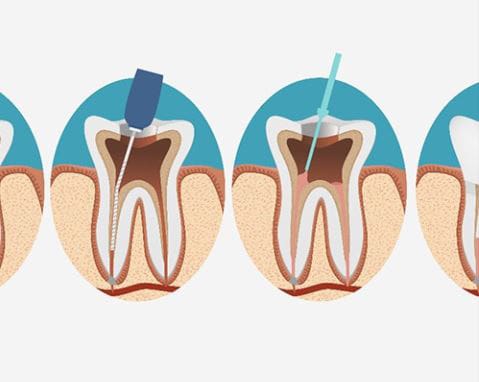
Hearing the words “root canal” might send a chill down your spine, but modern dentistry has come a long way—and root canals are now more comfortable and routine than ever. In fact, a root canal can save your tooth and relieve serious pain, making it a procedure that’s more helpful than harmful.
If you’re wondering what a root canal actually is and when one might be necessary, you’re not alone. Here’s everything you need to know to feel confident and informed.
What Is a Root Canal?
A root canal is a dental procedure used to treat an infected or severely damaged tooth. It targets the soft tissue inside your tooth, known as the pulp, which contains nerves, blood vessels, and connective tissue.
When the pulp becomes inflamed or infected—due to deep decay, a crack, trauma, or repeated dental work—it can cause intense pain and lead to further issues like abscesses or tooth loss.
A root canal removes the infected pulp, cleans and disinfects the inside of the tooth, and then seals it to prevent future problems. The tooth is usually topped with a crown to restore its strength and function.
When Is a Root Canal Needed?
You may need a root canal if the pulp of your tooth is infected or damaged beyond repair. Here are some common signs that might indicate it’s time to see your dentist:
- Persistent Tooth Pain
Constant or severe tooth pain—especially when chewing or applying pressure—can be a sign of deep infection or nerve damage inside the tooth.
- Sensitivity to Hot and Cold
If your tooth is extremely sensitive to hot or cold temperatures and the discomfort lingers long after exposure, it may indicate damage to the inner pulp.
- Swollen or Tender Gums
Swelling, tenderness, or a small pimple-like bump (called a fistula) near the affected tooth could suggest an abscess or infection spreading from the root.
- Discoloration
A tooth that has darkened or turned gray may have suffered trauma or pulp death, which often requires a root canal to treat.
- Cracked or Chipped Tooth
Cracks can allow bacteria to enter the pulp chamber, leading to infection and inflammation. Even if there’s no pain, a root canal may be needed to prevent future problems.
- Deep Decay
If decay has reached the inner part of the tooth and a filling is no longer enough, a root canal may be the only option to save the tooth.
What to Expect During a Root Canal
Despite its reputation, a root canal is no more uncomfortable than getting a filling. It’s typically done in one or two visits and involves the following steps:
- Numbing the Area: Local anesthesia ensures you won’t feel pain during the procedure.
- Cleaning the Tooth: The dentist removes the damaged pulp and cleans the root canals thoroughly.
- Filling and Sealing: The space is filled with a special material (called gutta-percha) and sealed.
- Restoring the Tooth: A crown is usually placed to strengthen and protect the tooth.
Afterward, you may feel some tenderness, but most patients return to normal activities within a day or two.
Why Root Canals Matter
The main goal of a root canal is to save your natural tooth. Preserving your own teeth helps maintain your bite, jaw health, and overall comfort. Thanks to advances in technology and techniques, root canals are highly successful—often lasting a lifetime with proper care.
Root Canal = Pain Relief
A root canal may sound intimidating, but it’s actually a powerful solution to relieve pain, stop infection, and save your smile. If you’re experiencing tooth pain or think something might be wrong, don’t wait—early treatment can prevent bigger problems down the road.
Talk to your dentist if you’re showing signs of needing a root canal. With prompt care, you’ll be back to feeling your best in no time.
